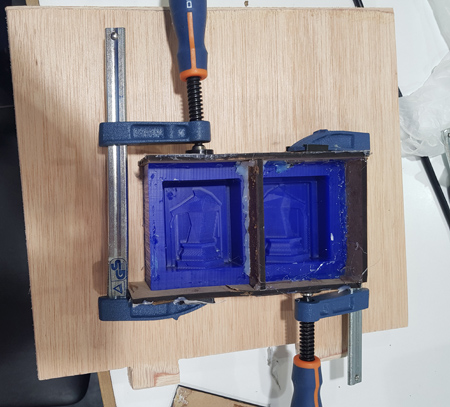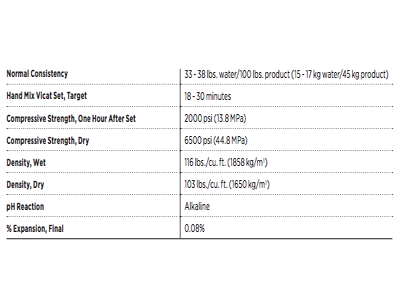Molding and casting
Reading safety data sheets and trying different casting materials
When doing moulding and casting we have to follow a certain workflow which is:
- Designing the piece that you want to create.
- Milling that shape in wax.
- Moulding: pouring a material inside the wax mold.
- Casting: process in which a liquid material is poured into a mold, which contains a cavity of the designed shape.
Before starting to design this week's project I did some tests with already made molds.
Using Smooth-Cast-305

The first material that we used was Smooth-Cast-305. We read the data sheet for extracting the security information and also the volume ratio that we needed to use:
- Composition: 1A:1B by volume or 100A : 90B by weight.


The mould that we were using was designed to create a pawn for playing chez. So, we calculated the volume of cast that we needed by pouring water inside the mould and then weighing that amount of water. Once we had that measure we multiplied by the material's
density and putting 100 of A and 90 of B.
We wanted to add some ink, SO Strong colorant, to the cast, so we read its datasheet.

As you can read, the colorants had to be added to component B before mixing both of them. We then mix the components and pour them into the mould.


In the technical overview we can also read the pot life time that the cast has, 7 min and the time that it takes to cure 30 min. We let it dry for 30 min approx and then we extracted the pawn (and the coins we did with the extra material).


Using Smooth-Sil-940
I then tried another cast, the Smooth-Sil-940, which can be used with food. You have to be carefull not to use it with plastics or other materials as you won't be able to use with food afterwards anymore. The technical overview of this product is shown below:

In this case the ratio of the components that we need to put is 100A : 10B by weight. The pot life is 30 min and the cure time is 24 hours. Is good that we have 30 min to mix, as in my case I had some trouble when mixing component
A with B because of their consistency!
I read the security data sheet to know what risks I could had when using this cast and what precautions to take. You can download the data sheet and the security data sheet by clicking on this links.

This time I was going to use this mould that was done the previous year by a student of the Fab Academy.
As done before I needed to know what volume I had to put of the mix. I filled the mould with water and then weighted it.
The weight of the water = 310g.
Then we multiplied this value for the materials density given in the previous table: 1.18 for the 940.
From the 365.8 of the toal we needed 100A and 10B. So by doing the calculus we obtain that we needed:
- 37 grams of B
- 329 grams of A.

Before mixing the components I had to stir component A as it was quite consistent. Then I mixed them for 5 minutes and the material was ready to be poured.
In these two pictures below you can see me pouring the material to my mould and in the second one how it looked like once filled.


I waited for 24 hours and then I removed the cast from the mould: This was the result:

Before using it as a mould for food I checked what considerations I needed before cooking something with them:

Taking into account these safety considerations I tried my mould with dark chocolate. Here you can see the result:


Using SILASTIC 3481 silicone
For the individual assignment mould I used a silicone, SILASTIC 3481.

This material has an application time: of 90-120 minutes and the proportion is 100 of SILASTIC 3481 with 5 parts of SILASTIC 81. The cure time is 24h.
The properties of this material are specified in this table of the datasheet:

Using Ultracal 30 Gypsum Cement
For the first figure that I did using my assignment mould I used Gypsum cement. The Datasheet of this material can be found on this link.
This cement needs 38 grams of water per 100 of the material, so I will explain bellow how I calculated the amount that I required bellow. It is also important to read the safety data sheet.

